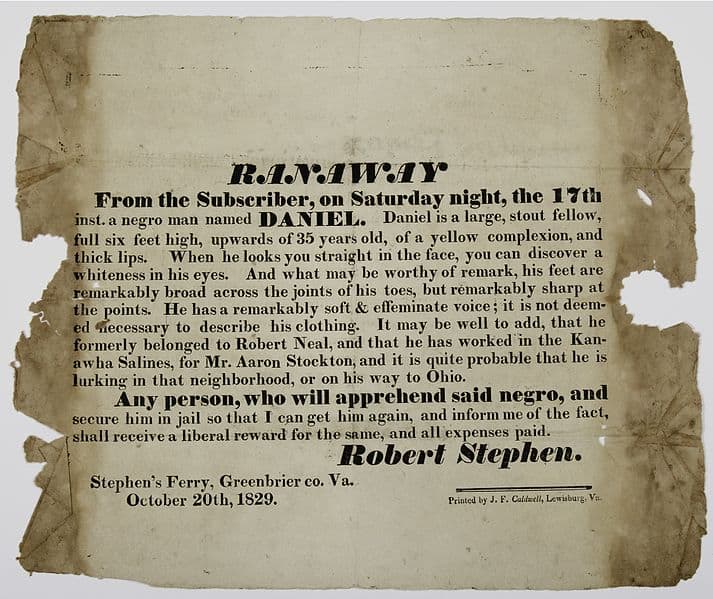
ADVERTISEMENT - CONTINUE READING BELOW
19. Punishments for enslaved workers were harsh, even by the standards of the day
Enslaved workers who ran afoul of their supervisors, overseers, or owners faced harsh punishments. Reading the advertisements describing runaways alone establishes that fact beyond dispute. The announcements describe runaways “…much marked with irons”…”much scarred with the whip”…”branded on the left jaw…”branded on the thigh and hips”. These scars were indicative of previous punishments, inflicted for reasons unknown. Virginia law established regulations for the treatment of slaves, though they were often simply ignored. Most punishments were intended to inflict pain, as a warning to others of the enslaved community, but maiming detracted from the value of the enslaved worker, both in terms of labor and sale. Nonetheless, it occurred with frequency. While some Virginia planters disdained such punishments, many others did not.
As abolitionist movements grew in the Northern states, and runaway slaves fled via the Underground Railroad, laws in Virginia controlling slaves grew harsher. At the time, the northwestern border of Virginia was the Ohio River. Slaves from Virginia, as well as from states further south, traveled across Virginia to reach Ohio. Slave communities on plantations large and small participated in helping escapees flee to the North and freedom. The penalties for hiding escaped slaves or aiding them in their flight could be inflicted upon entire slave communities. A large number of enslaved workers hired out in the Virginia economy faced interrogations from slave catchers, incarceration by suspicious magistrates, and in some cases outright kidnappings. By 1860, the daily life of an enslaved person in Virginia was fraught with considerable danger, with little or no legal protections.

